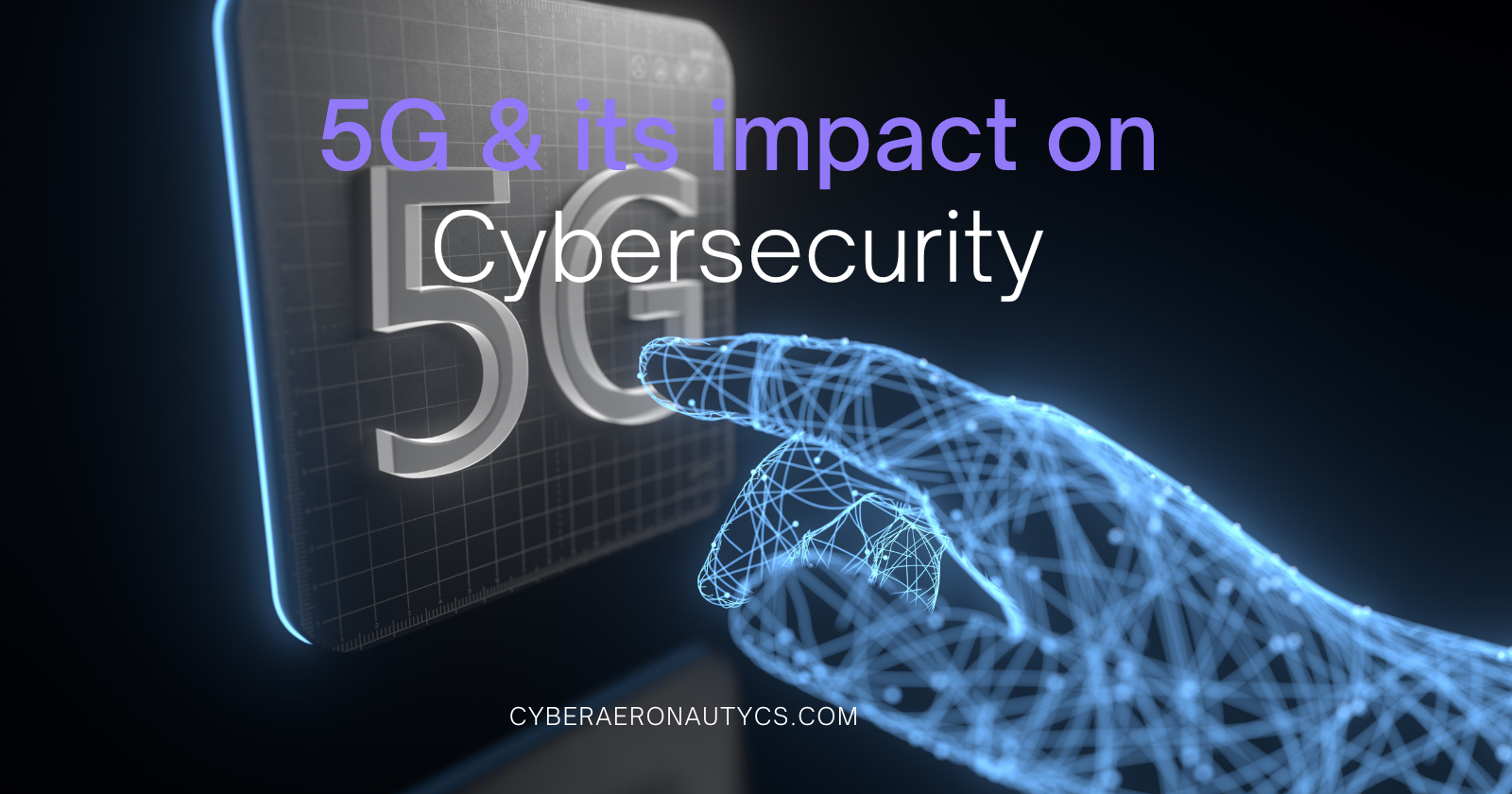5G and its impact on cybersecurity
 Hasan Mahmud
Hasan Mahmud
5th Generation
5G is the fifth generation of mobile networks and it's the latest technology for wireless communication. It promises faster speeds, lower latency, and more capacity than previous generations of mobile networks. This means that 5G networks will be able to support more connected devices, as well as more data-intensive applications such as virtual reality, video streaming and more.
However, 5G networks also bring new cybersecurity challenges. As 5G networks will be faster and more reliable, they will be used to support more critical systems and services, such as self-driving cars, healthcare systems, and industrial control systems. These systems will require a higher level of security than previous generations of mobile networks.
One major concern is that 5G networks will be more vulnerable to Distributed Denial of Service (DDoS) attacks. The increased number of connected devices and the higher capacity of 5G networks will make it easier for attackers to launch large-scale DDoS attacks that can overwhelm the network and cause a disruption of service.
Another concern is that 5G networks will be more susceptible to spoofing and jamming attacks. Because 5G networks use a higher frequency than previous generations of mobile networks, they will be more susceptible to these types of attacks, which can disrupt the network and cause a loss of service.
Additionally, the complexity of 5G networks and the increased number of connected devices will make it more difficult to identify and isolate security breaches. This will make it harder to detect and respond to cyber-attacks and other security threats.
In summary, 5G networks will bring faster speeds, lower latency and more capacity, but also new cybersecurity challenges. Organizations will need to adapt their security strategies and technologies to protect against these new types of threats and ensure the security.
New Risk
5G networks will also bring new risks related to the use of new technologies such as software-defined networks (SDN) and network function virtualization (NFV). These technologies enable network operators to create and manage network services dynamically and at a large scale, which can improve network flexibility and scalability. However, it also makes the networks more complex, and therefore, more vulnerable to attacks.
Another area of concern is the security of 5G devices themselves, which are expected to be more diverse than previous generations of mobile devices. 5G networks will support a wide range of devices, from smartphones and tablets to cars, drones, and IoT devices. These devices will have different levels of security and will be subject to different types of threats, making it more challenging to secure 5G networks.
Another issue is the security of the infrastructure itself. 5G networks will use a distributed architecture, with many small cells located in different locations, instead of the traditional large macro cells. This will make the network infrastructure more complex and harder to secure.
Lastly, 5G will bring new opportunities for attackers to use the technology to launch attacks. With the high speed, low latency and increased connection density, attackers could use 5G networks to launch advanced persistent threats (APT) or to create botnets.
Overall, 5G networks will bring many new opportunities, but also new cybersecurity challenges. Organizations will need to adapt their security strategies and technologies to protect against these new types of threats. This includes implementing security best practices, such as regular security assessments, incident response plans, and security monitoring. Additionally, it's important for organizations to stay informed about the latest security threats and best practices, and to work closely with network operators and vendors to ensure the security of their 5G networks.
Subscribe to my newsletter
Read articles from Hasan Mahmud directly inside your inbox. Subscribe to the newsletter, and don't miss out.
Written by

Hasan Mahmud
Hasan Mahmud
Hasan Mahmud is the Managing Director of Cyber Aeronautycs Ltd. and CTO of SECROOQ LTD. He helps producing actionable intelligence to protect against cyber threats by working behind the scenes to identify network and application-based vulnerabilities to businesses. Hasan has 12 years of experience where he applied his expertise and knowledge of threat actors’ tactics, techniques, and procedures to help develop signatures and mitigate attacks proactively for customers.